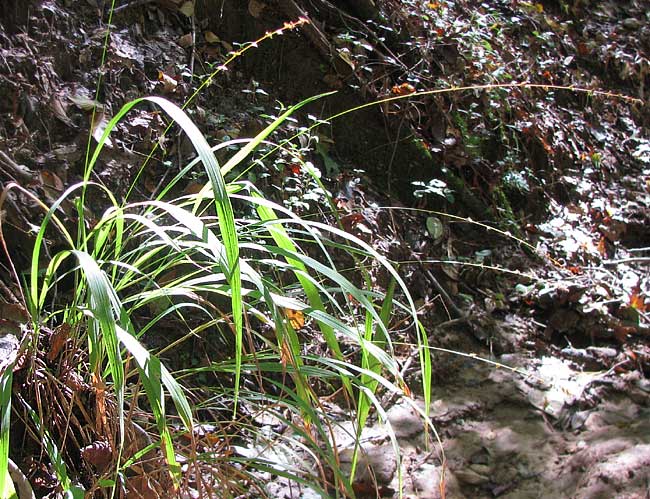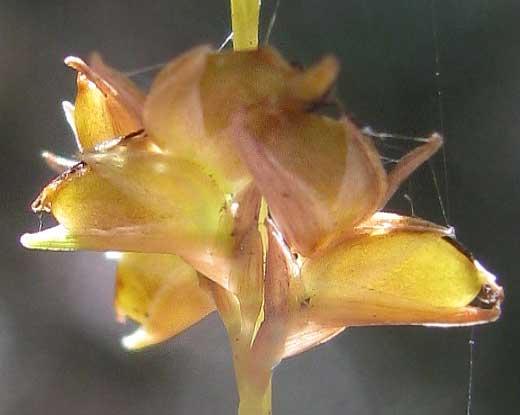Excerpts from Jim Conrad's
Naturalist Newsletter

from the October 25, 2009 Newsletter, from near Natchez, Mississippi
LONGLEAF WOODOATS
If you go into the woods where a small opening lets in a little light and the soil is rich and fairly moist, around here you're bound to see the grass shown above. One common name for this is Longleaf Woodoats. It's CHASMANTHIUM SESSILIFLORUM, common throughout the US Southeast, though it doesn't make it as far north as my boyhood home in Kentucky. A close-up of its flowers is shown below:

It's unusual for a grass's flowers to be twisted to one side like these. The broad, yellowish, disc-shaped things subtended by sharp-pointed, pinkish "bracts" -- the lemmas and paleas -- are simple, dry fruits, or grains, technically known as caryopses. It's also unusual for caryopses to be so exposed. I'm guessing that both the flowers' twistiness and the caryopses' exposed nature encourage birds to snatch them away, in the process dropping some of them, thus sowing them in new places.
Last year I introduced you to Indian Woodoats, which is similarly common and graceful. It belongs to the same genus. You can review what that species looks like at http://www.backyardnature.net/n/h/woodoats.htm.